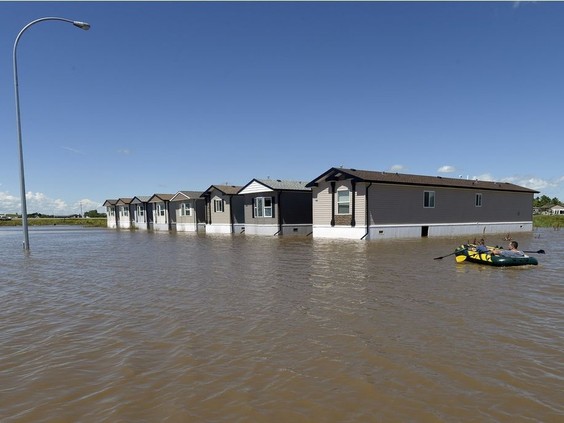Local Journalism Initiative Reporter
Saskatoon StarPhoenix
Stakeholders say Saskatchewan communities won’t be able to overhaul their civic structures with provincial funds that were announced this week, but the money may help cities and towns assess how they can become better equipped to handle flooding in the future.
“We are dealing with infrastructure that dates back 60-plus years,” said Lloydminster Mayor Gerald Aalbers.
“Continuously trying to update and trying to build capacity is critical, so funding can be applied to planning, engineering.”
The province this week announced funding for municipalities to start implementing long-term planning for flood prevention. The allocation under the Flood Damage Reduction Program is part of a $500,000 investment from the Emergency Flood Damage Reduction Program announced last April. The funds for the new long-term program stem from what remains of the emergency program.
Such planning would be welcome news, said Lloydminster Minor Baseball president Dave Pero. He remembers a 2019 weekend when a brief but powerful flash thunderstorm hit the area.
Going from one diamond to another, “the streets were crazy,” he said. “If you went down there, you’re going to get stuck.”
Some city streets were impassable. Homes were flooded. A year earlier, a storm flooded a local supermarket.
Aalbers said floods and other events put a strain on infrastructure, and it’s usually taxpayers who have to offset the costs of upgrades. The efforts arrive at a time when emergency responses have seen an uptick due to extreme weather conditions — droughts, floods and fires. Across the province, extreme weather events have become a more regular occurrence.
“If you wanted to do a detailed flood map … $500,000 would go pretty quickly,” said Saskatchewan Environmental Society vice-president Bob Halliday. “They might be able to do some risk assessment work that would help to categorize the nature of flooding and the things they have to deal with in that community. I would look at it as planning money rather implementation money.”
Saskatchewan residents in recent years have recorded and shared online their experiences with extreme weather.
In Prince Albert, Michael Lam posted an image by his sister Kelly showing an intersection near a Saskatchewan Government Insurance claim centre flooded from a passing storm in June.
Hank Vlietstra captured video footage in Prince Albert National Park after a powerful storm last summer, with trees snapped into pieces.
In Lloydminster, pictures showed a flood surrounding the city’s Cultural and Science Centre as a man walked by in waist-deep water.
Photos and videos spread quickly from Warman when residents slogged through knee-deep water after a 2018 storm. Since then, the community has added six kilometres of piping to drain its primary storm pond to the river, which in turn allowed for more capacity in the city’s infrastructure to accommodate water levels during a storm. That solution cost Warman upwards of $100,000.
Applications for the flood reduction program are open to projects such as hydraulic investigation for risk assessment, flood mapping projects and further mitigation planning. Applications open in October, and work is to be completed by March 31, according to the province.
“We hope communities take advantage of this funding to implement effective long-term mitigation strategies and become better prepared for possible floods in the future,” Minister Responsible for the Saskatchewan Water Security Agency Jeremy Cockrill said in the announcement.
The University of Saskatchewan has been working on generating predictive models as part of a future of water knowledge initiative. Fourteen First Nations and Inuit communities across Canada have been working on a water research protocol that seeks to work across governments and organizations to form a more equitable approach to meeting the needs of communities.


